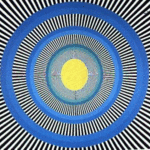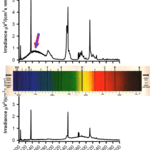Vision

Neuroscientists at Barrow Neurological Institute at St. Joseph's Hospital and Medical Center have discovered a direct link between eye motions and the perception of illusory motion that solves a 200-year-old debate.
Stephen Macknik, PhD, director of the Laboratory of Behavioral Neurophysiology; Susana Martinez-Conde, PhD, director of the Laboratory of Visual Neuroscience; Xoana G. Troncoso, PhD; and Jorge Otero-Millan; conducted a study based on the Enigma painting, a visual illusion in which rotational motion is seen within a stationary image. The artwork has been at the center of a…

Great athletes know that it takes more than physical ability to do well - it takes brain power in the form of speed and efficiency in decision-making as well. Two researchers from the School of Optometry, Professor Jocelyn Faubert and postdoctoral student David Tinjust, of the Université de Montréal say they have discovered how to train the brain of athletes to improve their overall athletic performance.
They put a dozen soccer, tennis and hockey players through multiple object-tracking exercises. In one of these exercises, subjects in the automatic virtual environment cave were…

Does your office lighting make you feel weary and dreary? The cure may be at hand! Recently, Professor Derk-Jan Dijk of the Surrey Sleep Centre has led a team testing out new bulbs with a colour temperature of 17,000 Kelvin and found that they increase alertness as compared with more traditional types of lighting. But this sounds rather alarming. 17,000 Kelvin would be the temperature of a star close to B3 in the main sequence, somewhere between Alkaid and Regulus in properties. The luminance of these stars is largely in the ultraviolet, and they would give one a…

Eyes are the interface between the outside world and our brain's perceptions. Being the instrument of sight, and therefore a lot of our information, we rely on the functions of our eyes quite obsessively, and why wouldn't we? They make it possible to observe our beautiful world and really appreciate different species and the unique characteristics they hold - like their eyes.
Evolution of the EyeSince eyes do not fossilize very well, we cannot exactly depict the changes in eyes as we can with the evolution of, let's say, legs and what not. What scientists can do, and what…

Massachusetts General Hospital (MGH) researchers have used gene therapy to restore useful vision to mice with degeneration of the light-sensing retinal rods and cones, a common cause of human blindness. Their report, appearing in the Oct. 14 Proceedings of the National Academy of Sciences, describes the effects of broadly expressing a light-sensitive protein in other neuronal cells found throughout the retina.
"This is a proof of principle that someday we may be able to repair blindness in people with conditions like retinitis pigmentosa and macular degeneration," says Richard Masland, PhD…

'Blindsight' is a phenomenon in which patients with damage in the primary visual cortex of the brain can tell where an object is although they claim they cannot see it.
A research team led by Prof. Tadashi Isa and Dr. Masatoshi Yoshida of the National Institute for Physiological Sciences, Japan, provides compelling evidence that blindsight occurs because visual information is conveyed bypassing the primary visual cortex.
The researchers recorded eye movements of Japanese monkeys that had damage in one side of the primary visual cortex. Training with an eye movement task for 2-3 months…

LONDON, October 4 /PRNewswire/ -- The world's populations are ageing rapidly, bringing greater risk of blindness and vision impairment to millions. Around the world, organisations of many kinds are joining forces to help protect the eyesight of older people, and to mark World Sight Day 2008 (WSD08).
Worldwide, 45 million people are blind, the great majority of whom are over 50 years of age, but in over three-quarters of cases, especially those affecting older people, the sight loss results from preventable or treatable causes (otherwise known as avoidable) - 75% of blindness is avoidable.
-…

KAISERAUGST, Switzerland, September 16 /PRNewswire/ -- A new scientific study has shown that consuming Beta-carotene over a long period of time may help to preserve mental fitness by improving how the brain, and more importantly the memory, works. While it has long been acknowledged that eating Beta-carotene-rich foods or taking supplements of this antioxidant can help to protect the skin from damaging effects of sunlight and to protect the eyesight, these new findings suggest a whole new reason for making it nutritionally essential.
Two sets of experiments in combination - The Physicians…

We learned from the prior blog that the Sun is much too bright for normal viewing with our sensitive eyes. A white “color” results when we observe objects that are both extremely bright and bright at all or most visible wavelengths. Please allow me to elaborate a little more on this issue.
[Hang in there.]
This white result can be quite deceptive since its true color could be any color once we attenuate the object’s intensity to a light flux conducive to our normal eyesight. The reason for this blinding effect is due to the behavior of our color receptors (color cones) when they are…

A 115-year-old woman who had remained mentally alert throughout her life had no evidence of Alzheimer's disease, according to a study in the August issue of Neurobiology of Aging, questioning the assumption that Alzheimer's disease or other forms of dementia will inevitably develop, if people live long enough.
Prof. dr. Gert Holstege of University Medical Centre Groningen, The Netherlands and colleagues had a unique chance to test the mental functioning of one of the world's oldest humans, and then to compare their findings with the condition of the subject's brain after death.
The patient…